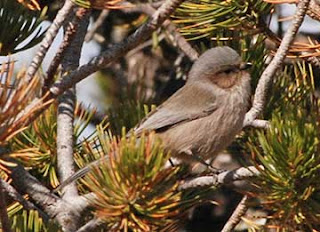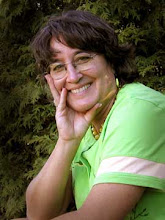 |
| Vermillion Flycatcher male |
I spent about five months in 2009 and 2010 helping the U. S. Census Bureau count people for the 2010 tally. I spent the last two days counting birds for the 111th annual Christmas Bird Count. About a dozen of us covered two circles fifteen miles in diameter here at Big Bend National Park, one in the Chisos Mountains area, and the other in the Rio Grande Village area. People came from Austin, Las Cruces, NM, and other places to help us "locals" with this important (and very fun) duty.
The CBC began just as the country was getting the idea that indiscriminate killing of birds for fashion and "sport" was immoral, causing the drastic decline and sometimes extinction of innocents. From the National Audubon Society website:
Prior to the turn of the century, people engaged in a holiday tradition known as the Christmas "Side Hunt": They would choose sides and go afield with their guns; whoever brought in the biggest pile of feathered (and furred) quarry won.
Beginning on Christmas Day 1900, ornithologist Frank Chapman, an early officer in the then budding Audubon Society, proposed a new holiday tradition-a "Christmas Bird Census"-that would count birds in the holidays rather than hunt them.
 |
Bushtit in pinyon pine
|
 |
| Butterbutt (Yellow-rumped warbler, Audubon's variety) |
The mechanics of being "citizen scientists", as Audubon calls us, are simple. You see a winged shape zip by and you try to identify and tally it. If it hides, you "pish" and hope it's one of the curious species that responds by popping out to see what the fuss is about. (Pishing, for you non-birders, is when you go "pwsssssh pwsssssh pwsssssh" repeatedly, which is supposed to be an alarm call or possibly just an annoying noise that birds can't resist. I was taught as a kid to make a squeaky noise by kissing the back of my hand, and I also resort to that.
 |
| Black-crested Titmouse |
Too much pishing is considered harassment, so one must be discriminating. (And woe to those who use taped bird calls to lure in the target - this adds stress to birds thinking an intruder has arrived and must be fought off.) Most birds ignore us anyway, so we hope for that one little glimpse to tell us the bird is a black-throated sparrow instead of a white-crowned, or a black-tailed gnatcatcher instead of a blue-gray. We look for that flash of tail of a soaring bird a quarter mile in the air that tells us it's a red-tailed hawk, and listen for that twitter in the bushes that tells us the bird we never see is a verdin.
 |
| Black Phoebe |
I'm amazed at how good some people are at birding. They have better eyes than mine, and better memories, and can identify quickly a bird I struggle with. (Oh those pesky sparrows - so many shades of brown!) That's why it's good to bird with others - yes "bird" is a verb - even though it's an activity I often do alone, and find enormously relaxing.
Of course, we all went down to Daniels Ranch to see the illustrious Tufted Flycatcher, but even though we got there minutes after the sun struck the cottonwood trees, only a few people there before us saw it before it went elsewhere. It did get on the Count, though - woo hoo for Big Bend!
 |
| Looking for the elusive Tufted Flycatcher at RGV- it was shirtsleeves weather a couple hours later |
|
Why do people "bird?" I guess it's part of the hunting instinct our ancestors needed to survive, ours being the "thrill of the hunt" to find, not to kill. It also fulfills a need in some of us to "collect" - and many birders have a Life List. (I won't even mention those who spend tens of thousands of dollars and petroleum products chasing rare birds for their lists. This may be a type of Obsessive Compulsive Disorder, or maybe just somebody who can afford to do what the rest of us would love to do if we didn't have to pay our bills.)
 |
| Ruby-crowned kinglet showing his ruby |
But mostly, I think it's that we appreciate beauty, and birds are indeed beautiful and even mysterious. They migrate by means even scientists can't fathom, and return to the same bird box the following spring. Mystery! Even the piercingly squeaky calls of the starling are, in their own way, marvelous, no matter what one may think of the species itself.
 |
| Rufous-crowned sparrow |
I pity the poor souls who are not moved by birds, who do not thrill at the spring song filling a deciduous woodland, or marvel at the glistening colors of a hummingbird. When I did the people Census in Maine, I noticed a great many people had bird feeders in their yards. Birdwatching is one of the top hobbies in this country. In the same way ladies of fashion gave up their hat feathers a century ago to save the egrets who were killed on their nests for their plumage, I think the backyard birder today can be motivated to support conservation measures that will help "their" birds survive. The Christmas Bird Count is one way to do this.
 |
| Black vulture |













